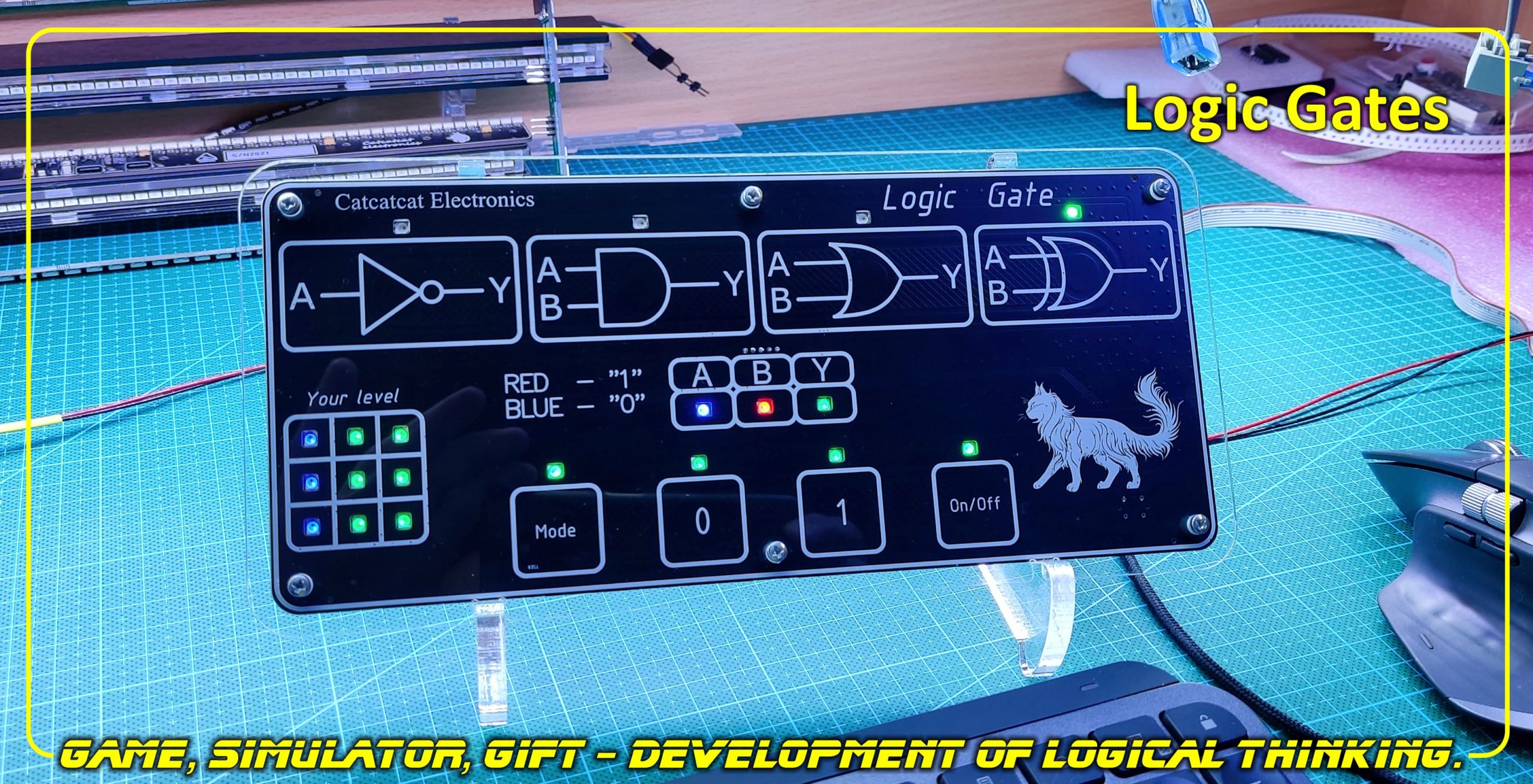To Everyone,
Wishing you all a very Happy & Prosperous New Year of 2026, full of new Ideas & Achievements, both in your Professional as well Personal lives.

|
21
on: January 02, 2026, 03:25:16 03:25
|
||
| Started by sam_des - Last post by sam_des | ||
|
22
on: January 01, 2026, 01:36:54 13:36
|
||
| Started by Catcatcat - Last post by Catcatcat | ||
|
I would like to share one of my projects with the sonsivri community.  A game, a simulator, a gift – the development of logical thinking. The game is designed to develop logical thinking in children, and can also be used as a Kit – as a board for learning to program in C and working with microcontrollers from Microchip Corporation. The game can be a gift for a child, for teaching logical thinking, and a gift for a development engineer, electronics engineer, programmer, on the desktop, for a moment of rest and training logical thinking. The game is a touch panel with a light indication of the status and mode of operation. The game can be controlled directly from the panel by touching the touch buttons, or using the computer’s serial port with a simple command system. See the description for setting up and describing control codes. The game has 6 difficulty levels. There are 27 user ratings in each level. Description and download links... https://github.com/CatcatcatElectronics/Logic_Gates https://catcatcat.d-lan.dp.ua/game-exercise-machine-logic-gates/ |
||
|
23
on: December 31, 2025, 02:02:06 14:02
|
||
| Started by mars01 - Last post by pushycat | ||
|
Wish all Sonsivri members, my friends a Happy and prosperous New year 2026.
|
||
|
24
on: December 31, 2025, 01:50:56 13:50
|
||
| Started by mars01 - Last post by Manuel | ||
|
I reply you all : HAPPY NEW YEAR to YOU and to your families too.
Take care, X! |
||
|
25
on: December 29, 2025, 04:12:54 16:12
|
||||||
| Started by Johnsy - Last post by Johnsy | ||||||
|
||||||
|
26
on: December 29, 2025, 05:38:50 05:38
|
||
| Started by sfabris - Last post by h0nk | ||
|
hello friends, does any one have this keygen and can upload please? LINK.TXT Best Regards |
||
|
27
on: December 29, 2025, 01:17:21 01:17
|
||
| Started by sfabris - Last post by anotherandrew | ||
|
hello friends, does any one have this keygen and can upload please?
|
||
|
28
on: December 28, 2025, 03:26:28 15:26
|
||||||
| Started by Teiner - Last post by Teiner | ||||||
|
||||||
|
29
on: December 27, 2025, 08:48:49 20:48
|
||
| Started by mars01 - Last post by snowman | ||
|
Merry Christmas to all my friends there... Be good...
|
||
|
30
on: December 27, 2025, 04:54:09 16:54
|
||
| Started by Wizpic - Last post by professor47 | ||
|
I have used Picoscope for 10+ years and love it. Sold by bench scope a while ago and have not missed it.
If you want just a simple scope for canbus, the cheapest one (150USD) does the job if you can live with the smaller memory. They all use the same powerful software that includes CAN plus many other protocols. If you want to debug an event that span over some time you want to consider a step or two up to get more memory. My 5443D can sample 2 seconds of data into the buffer with 42MS/s. With the scroll-wheel on the mouse I can quickly zoom in on ns events. |
||

